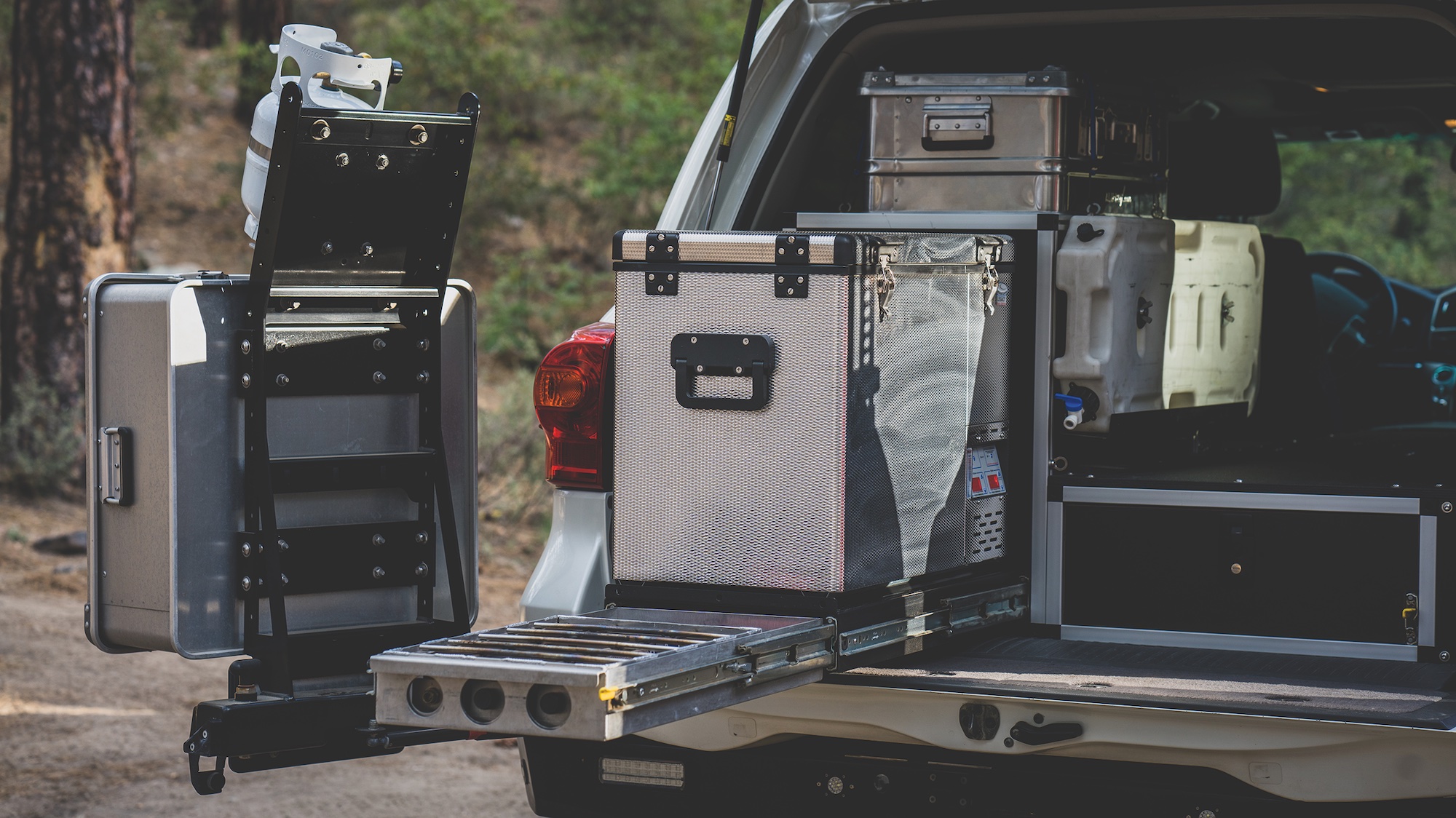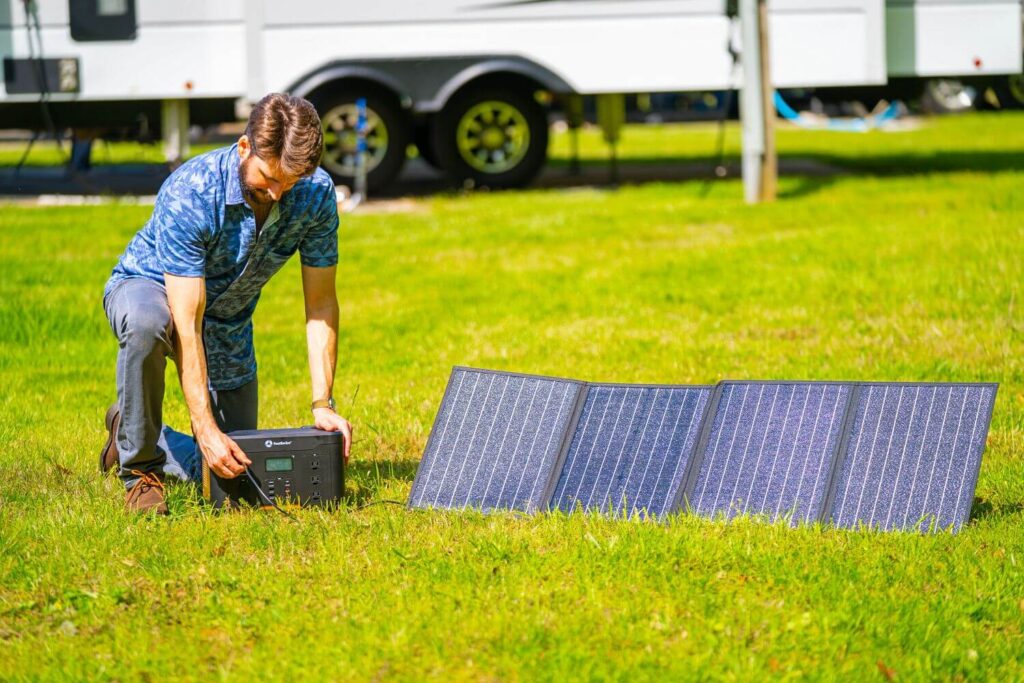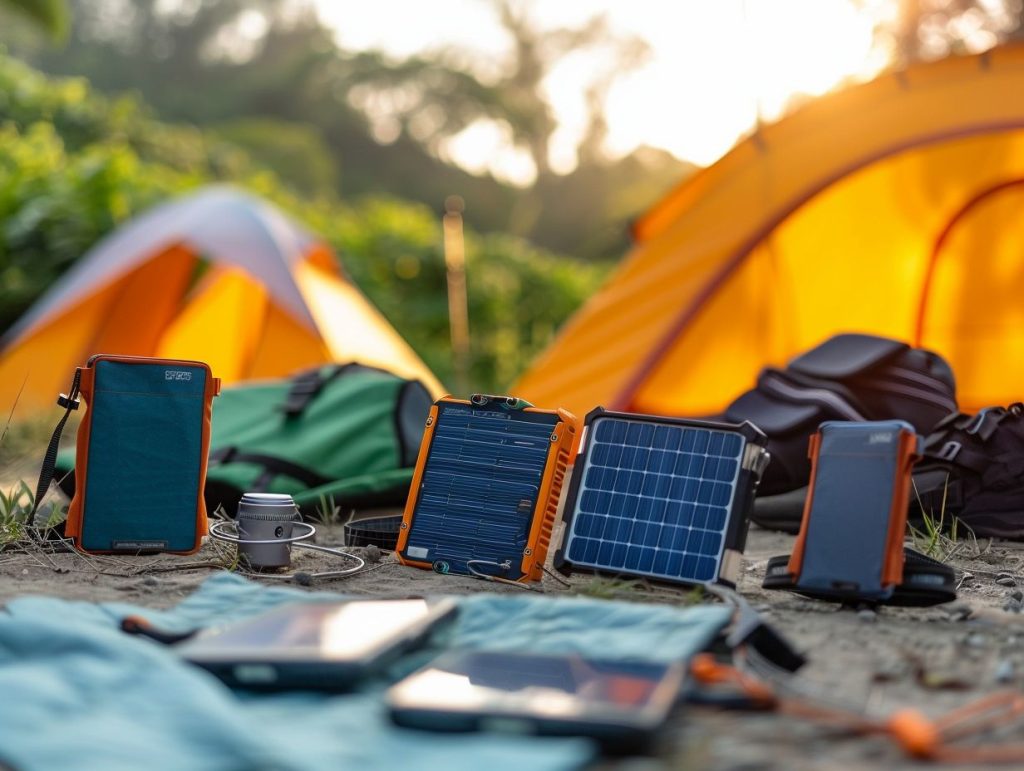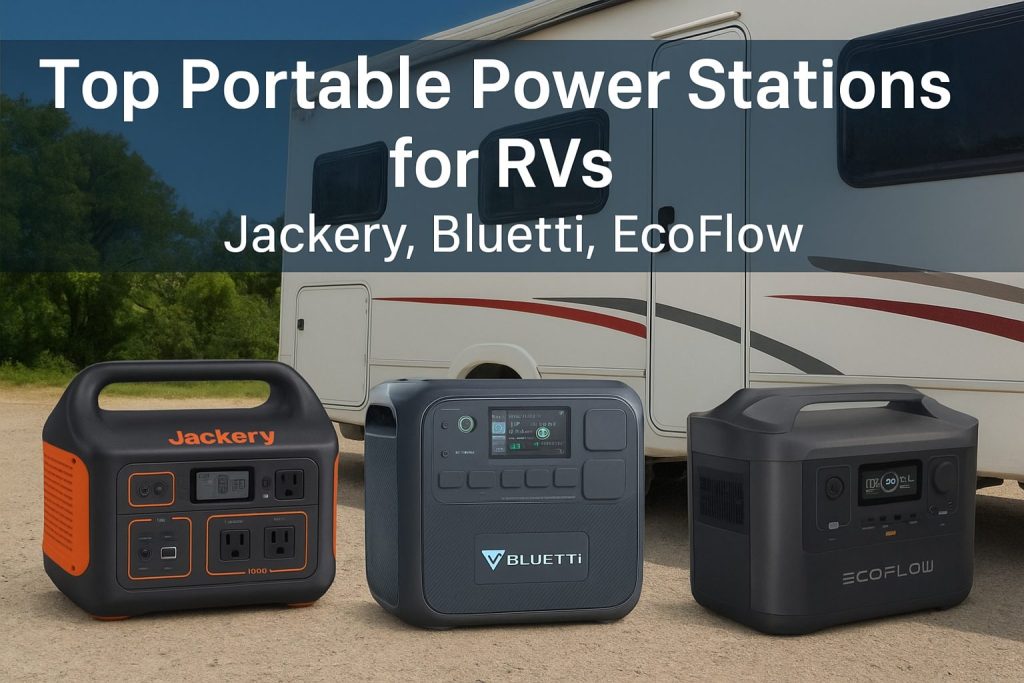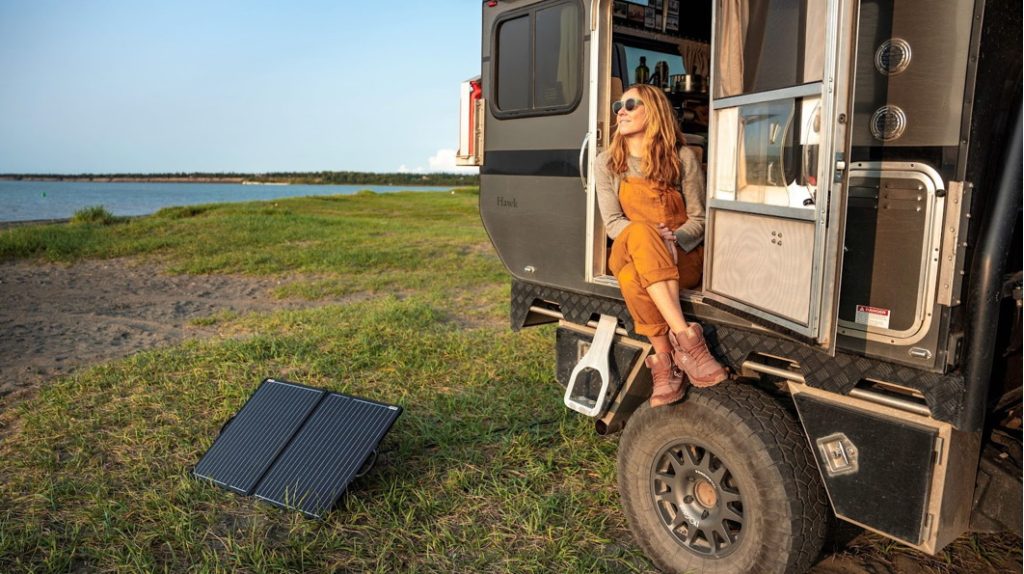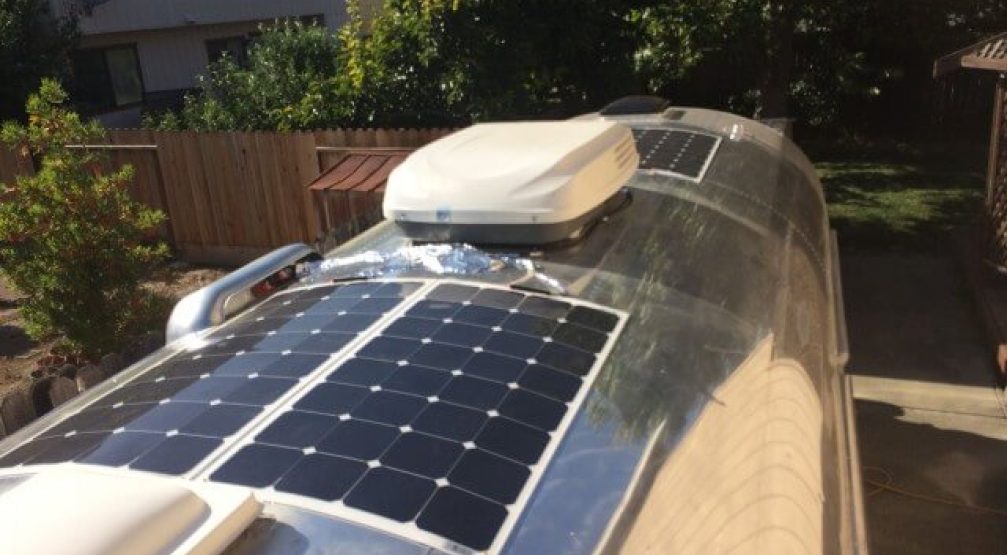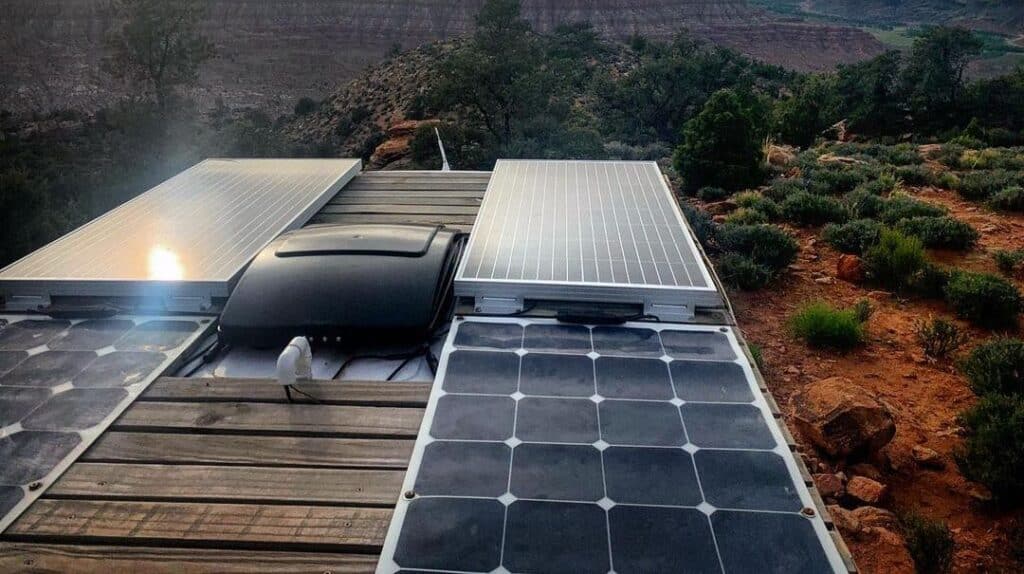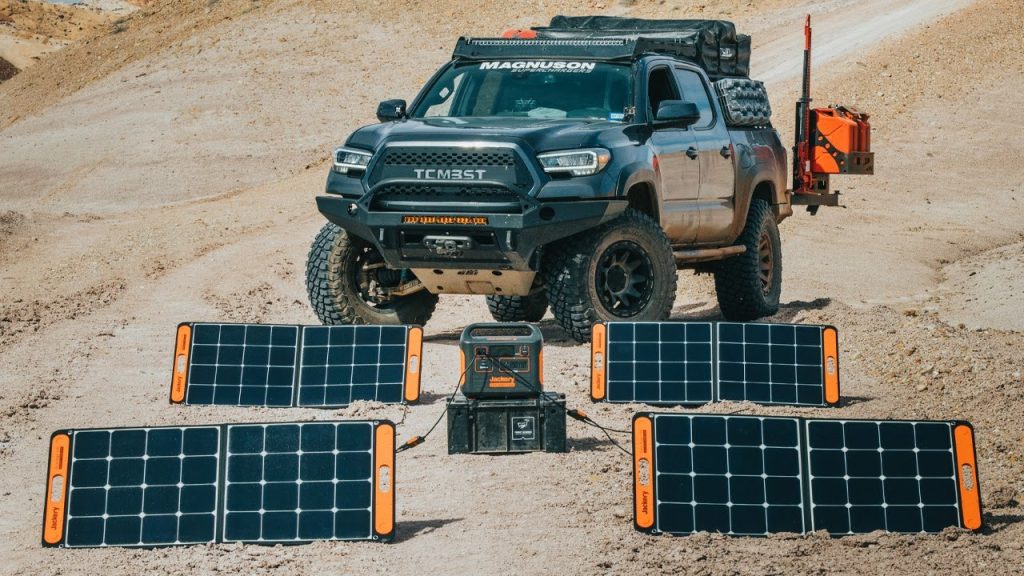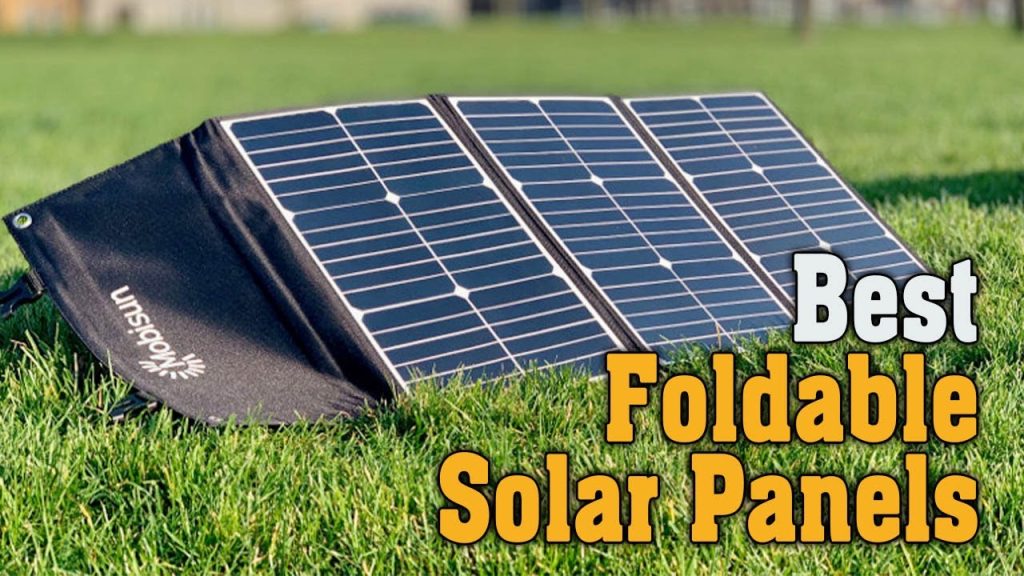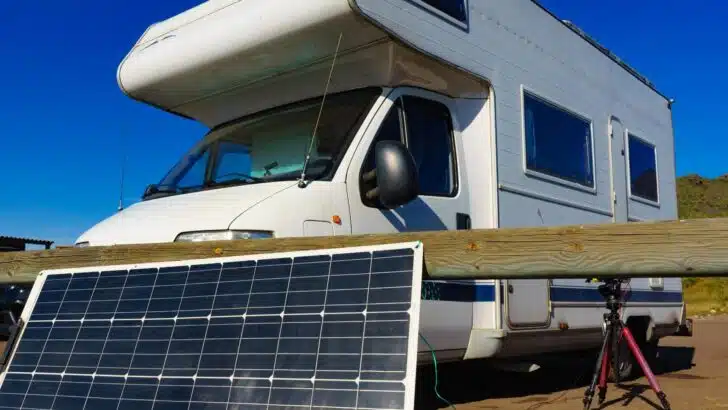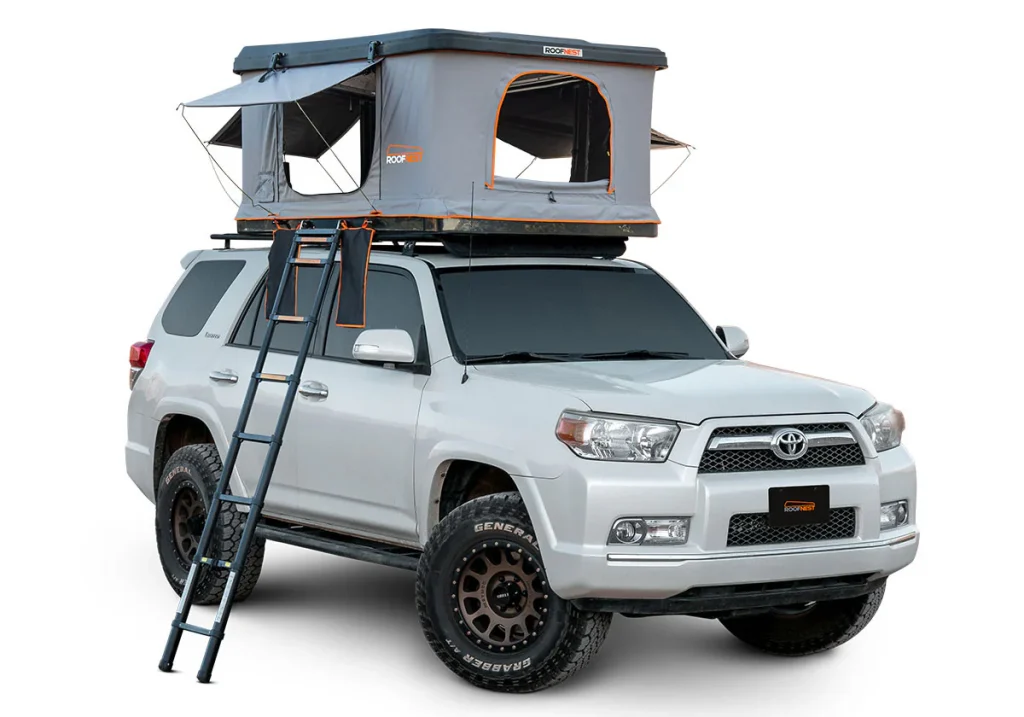Overlanding is all about self-reliance, exploration, and venturing off the beaten path—often for days or weeks at a time. Whether you’re driving through desert dunes, forest trails, or rugged mountain roads, having a reliable way to store your food and beverages can dramatically improve your journey. That’s where a dependable overlanding fridge comes in.
Unlike traditional coolers that rely on melting ice, overlanding refrigerators offer consistent, long-term cooling. These purpose-built appliances ensure that your meals stay fresh, your drinks remain cold, and your supplies are preserved, even in the most remote areas. However, choosing the right fridge can be overwhelming due to the variety of models, power requirements, and features available.
This guide breaks down everything you need to know about overlanding fridge options, including types, pros and cons, key buying considerations, and top recommendations for 2025—so you can make an informed decision before your next adventure.
Overlanding and Camping Fridge
An overlanding or camping fridge is a portable, rugged refrigerator designed for off-road travel and extended outdoor use. Unlike household fridges, these units are engineered to withstand vibrations, fluctuating temperatures, and the unique demands of vehicle-based travel.
Several types of inland fridges are available, including compressor fridges, thermoelectric coolers, and absorption fridges. Each type has its advantages depending on your travel style, power setup, and budget.
Overlanding fridges are typically powered by your vehicle’s 12V battery system, solar panels, or external power sources. Some advanced models even offer dual-zone functionality—allowing one compartment to freeze while the other cools—giving you the flexibility to store everything from meat to cold drinks.
Whether you’re heading out for a weekend getaway or embarking on a cross-continental expedition, investing in a reliable overlanding fridge ensures your food stays safe and your trips remain comfortable, no matter where the trail leads.
Factors to Consider When Choosing an Overlanding Fridge
Choosing the right overlanding fridge isn’t just about picking the most expensive or the largest model. It’s about finding a unit that suits your travel needs, power setup, storage capacity, and terrain. Below are the key factors to evaluate before making a decision.
Size and Capacity
The size of your fridge will depend on the length of your trips, the number of people you’re feeding, and the available space in your vehicle. Fridge capacities typically range from 25L to 100L or more:
-
25–40L: Ideal for solo travelers or weekend trips.
-
40–60L: Suitable for couples or short family outings.
-
60L+: Great for larger groups or extended expeditions.
Also, consider how much space the fridge will occupy in your rig, especially if you have limited room for gear and supplies.
Power Draw and Battery System
An overlanding fridge draws power continuously to maintain its temperature, so it’s essential to match it with a suitable power system. Compressor fridges are energy efficient but still require a solid 12V setup—often supported by a dual battery system or solar panels.
Look at:
-
Average power consumption in amp-hours (Ah) per day
-
Your battery bank’s total capacity
-
How often do you recharge
Efficient power management can mean the difference between a spoiled meal and a cold drink at the end of the day.
Insulation and Cooling Performance
Efficient insulation is critical for maintaining consistent internal temperatures, especially in extreme heat. A well-insulated fridge will retain cold longer and reduce strain on your power supply.
Check for:
-
High-quality foam insulation
-
Thick wall construction
-
Performance in high ambient temperatures (above 30°C / 86°F)
Look for models that can cool to -18°C (0°F) and remain stable even when external temps fluctuate.
Dual Zone Functionality
A dual-zone fridge offers two compartments that can operate independently—one as a fridge and the other as a freezer. This flexibility is ideal for longer trips, allowing you to keep frozen meats or ice packs on one side while chilling beverages or produce on the other.
Benefits include:
-
Better organization
-
Meal prep variety
-
Reduced spoilage
While dual-zone models are typically more expensive and larger, the convenience often outweighs the cost for serious overlanders.
Durability and Build Quality
Overlanding involves bumpy trails, dust, heat, and vibrations—your fridge needs to be tough. Prioritize fridges built with reinforced corners, strong hinges, and impact-resistant materials.
Key features to look for:
-
Heavy-duty latches and handles
-
Metal casing or rugged plastic
-
Shock-resistant design
-
Dust and water resistance (IP ratings are a plus)
Durability ensures your investment lasts across countless adventures.
Ease of Use and Features
User-friendly fridges save time and hassle. Features that make a difference include:
-
Digital temperature controls
-
Bluetooth/Wi-Fi monitoring
-
Interior lighting
-
Removable baskets or dividers
-
Soft-close lids or dual-opening designs
These convenience features improve access, control, and food management while you’re out on the trail.
Cost
Overlanding fridges can range from $150 for basic thermoelectric units to over $1,500 for high-end dual-zone compressor models. While budget is a factor, think long-term: a quality fridge is an investment that pays off in reliability, energy efficiency, and food safety.
Ask yourself:
-
How often will I use it?
-
What features matter most for my style of travel?
-
Is it compatible with my current power setup?
Choose the best fridge you can afford that aligns with your needs, not just the one with the most bells and whistles.
Overlanding Refrigeration Options
When it comes to keeping your food and drinks cold during your off-road adventures, there are several refrigeration options available—each with its own benefits, limitations, and ideal use cases. Let’s take a closer look at the most common overlanding refrigeration types to help you choose the best fit for your travel needs.
1. Compressor Fridges/Freezers
Compressor fridges are the most popular and reliable option for overlanders. They use a compressor—much like your home refrigerator—to actively cool and freeze contents, regardless of the outside temperature.
Pros
-
Active cooling: Maintains precise temperature control even in extreme heat, making it suitable for long trips.
-
Robust and durable: Built for rugged conditions, many models feature reinforced casings and shock-resistant designs.
-
Versatile: Can operate as a fridge, freezer, or both (in dual-zone models).
-
Efficient: Low power consumption when paired with a good battery or solar setup.
-
Convenience: Some models offer Bluetooth or Wi-Fi connectivity for remote monitoring.
Cons
-
Higher initial cost: Compressor fridges are an investment, often ranging from $500 to $1,500+.
-
Can be heavier: Due to their robust build and components, they tend to be bulkier than other cooling options.
Considerations
-
Dual-zone models: Ideal if you need both refrigeration and freezing capabilities at the same time.
-
Size: Choose a capacity that fits your vehicle layout and trip duration.
-
Power consumption: Ensure compatibility with your battery system and consider adding solar for extended trips.
-
Durability: Opt for models with metal or heavy-duty plastic construction for maximum longevity.
-
Ease of use: Digital controls, interior lights, and removable baskets enhance user experience.
2. Thermoelectric Coolers
Thermoelectric coolers are compact, lightweight, and perfect for casual campers or short weekend getaways. Instead of using a compressor, they use electricity to move heat away from the inside, offering modest cooling capabilities.
Pros
-
Affordable: Significantly cheaper than compressor fridges, with prices often below $150.
-
Lightweight: Easy to carry and move, ideal for small vehicles or limited cargo space.
Cons
-
Limited cooling: Generally cools 20–30°F below ambient temperature—ineffective in very hot environments.
-
Less efficient: Consumes constant power without strong cooling performance, potentially draining batteries faster.
Best for: Day trips or mild climates where refrigeration isn’t critical. Not suitable for long-term food preservation.
3. Absorption Fridges
Absorption fridges offer a unique approach to cooling by using a heat source (rather than a compressor or electric element) to circulate a refrigerant. These fridges are valued for their flexibility in power sources.
Pros
-
Versatile power options: Can operate on 12V DC, 240V AC, or propane gas—making them especially useful in remote areas where electricity may not be available. This makes them a good fit for base camps or longer stays off-grid.
Cons
-
Less efficient in extreme heat: Struggles to maintain low temperatures when ambient temperatures rise significantly. Cooling performance is often tied to the outside temperature, which limits its reliability in hot climates.
Best for: Stationary camping or travelers who prefer extended stays in one spot and need propane-based refrigeration.
4. Food Storage Containers
While not technically refrigeration units, food storage containers play a crucial role in overlanding food management. They help organize supplies, protect items from pests and contamination, and can be paired with coolers or fridges for added efficiency.
Beyond refrigeration: Dry goods, snacks, and pantry items don’t always require cooling. Airtight storage helps preserve freshness and prevents spoilage without consuming power.
Options:
-
Airtight plastic bins: Great for cereals, pasta, or spices.
-
Vacuum-sealed bags: Reduce volume and extend shelf life.
-
Stackable containers: Help maximize vertical space in drawers or cargo boxes.
Space optimization: Efficient packing means more storage in less space. Choose containers that fit your fridge or storage area dimensions, and label them for easy access during travel.
Best for: Supplementing fridge space, organizing meals by day or type, and minimizing clutter in your overlanding setup.
Alternatives to Portable Fridges
While portable fridges are a top-tier choice for overlanders, they’re not the only option. Depending on your budget, trip duration, and access to power or ice, there are reliable alternatives that can still keep your food and drinks cool on the road.
Coolers and Ice Boxes
Coolers are a tried-and-true method for short-term cold storage. With quality insulation and regular ice top-ups, a good cooler can keep food fresh for up to several days.
-
Best for shorter trips where power supply is limited or not available.
-
High-performance coolers like rotomolded models (e.g., YETI, RTIC) can retain ice for 5+ days.
-
Low maintenance and no power draw make coolers a dependable backup.
Limitations: Ice must be replenished, and water accumulation can lead to soggy food if items aren’t properly packed.
Three-Way Fridges (Absorption Fridges)
Three-way fridges can run on 12V DC, 240V AC, or propane gas, offering great flexibility, especially at campsites or when vehicle power isn’t consistently available.
-
Ideal for base camps, caravans, and overlanders staying parked for longer durations.
-
Can run silently on propane, without battery usage.
Limitations: Lower cooling efficiency, especially in high temperatures, and slower cooling times compared to compressor models.
Tips for Keeping Food Fresh in Your Overlanding Fridge
Regardless of the type of fridge or cooler you use, a few smart practices can make a big difference in how long your food stays fresh, and how well your fridge performs in the field.
Store Food Properly
Use airtight containers or zip-lock bags to keep food sealed, reduce odors, and prevent cross-contamination. Pre-freeze meats and meals when possible to prolong freshness and help maintain lower fridge temperatures.
Organize Your Fridge
Keep frequently used items at the top or in easy-to-reach sections. Group similar foods together—like meats, dairy, and produce—to minimize open time and avoid rummaging through the fridge.
Pack Smart
Chill or freeze items before placing them in the fridge to reduce the internal load. Leave some airflow between items to allow cold air circulation. If you’re using a dual-zone fridge, dedicate one side for items that need to stay frozen.
Maintain Your Fridge
Clean the interior regularly to prevent mold or odor buildup. Periodically check seals and vents to ensure efficient operation. Monitor temperature levels, especially in hot environments.
Consider a Travel Bag
Insulated fridge covers or travel bags add an extra layer of thermal protection and help reduce power consumption by shielding your unit from direct sunlight and heat.
The Best Overland Fridge Freezers 2025
Choosing a reliable overland fridge can be overwhelming, especially with so many options on the market. To simplify your search, here are four of the best-performing and most trusted fridge freezers for overlanding in 2025. These models are known for their durability, efficiency, and smart features—ideal for both weekend warriors and full-time adventurers.
ARB 50L Fridge Freezer

The ARB 50L is a legendary overlanding fridge with a strong reputation for ruggedness and consistent cooling. It’s a favorite among serious off-roaders due to its durable design and excellent performance in harsh environments.
Key Features:
-
50L capacity (suitable for 2–4 days off-grid)
-
Weatherproof digital control panel
-
Internal LED light
-
Heavy-duty hinge and latch system
-
Compatible with ARB fridge slides and tie-downs
Likes:
-Great ARB customer service
-Easy one-hand lid operation
-Carrying handles double as secure tie-downs
-Low voltage cutoff
-Rear facing interior LED light
Dislikes:
-Lid does not close tightly until latched
-Transit/Insulation bag sold separately
Price: $924
www.arbusa.com
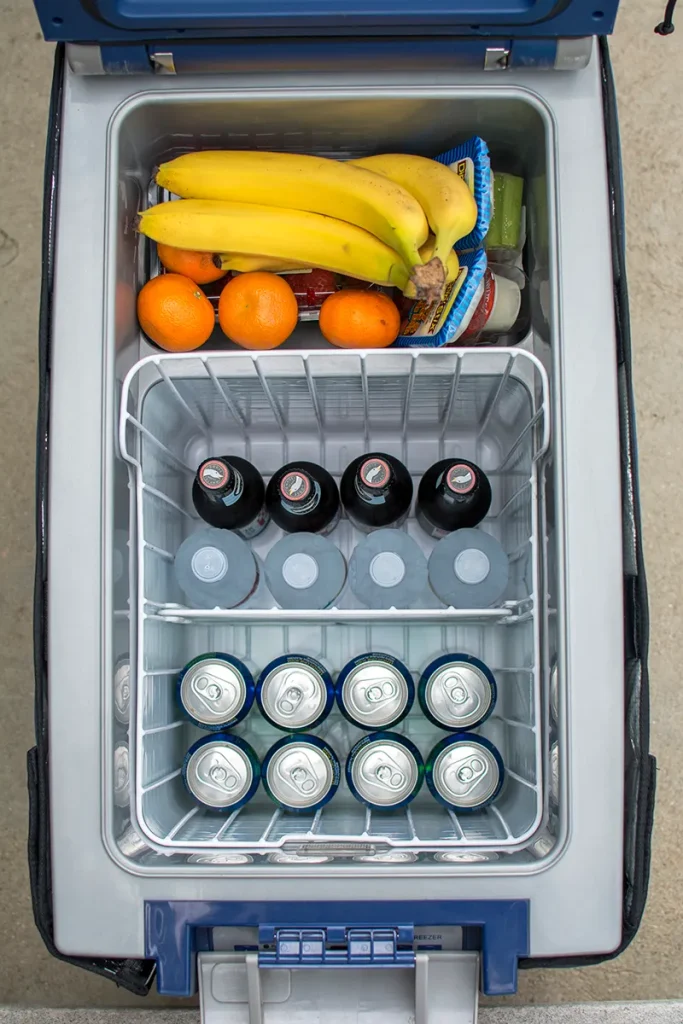
Why It’s Great: Built to endure vibrations, dust, and extreme heat, the ARB 50L delivers consistent cooling and is built for the long haul.
Dometic CFX40

Dometic’s CFX series is a powerhouse in the world of portable refrigeration. The CFX40 combines smart technology with deep-freezing capability, all in a compact footprint.
Key Features:
-
38L internal storage with freezer capability
-
Wi-Fi/Bluetooth app control via Dometic app
-
VMSO3 compressor with low energy draw
-
Can deep freeze to –22°C (–7.6°F)
-
USB port for charging devices
Likes:
– Great price
– Intuitive and easy to use app
– Whisper quiet
– Easiest self-latching lid operation
– Low voltage cutoff
Dislikes:
– Tie-down/anchor kit sold separately
Price: $614
www.dometic.com
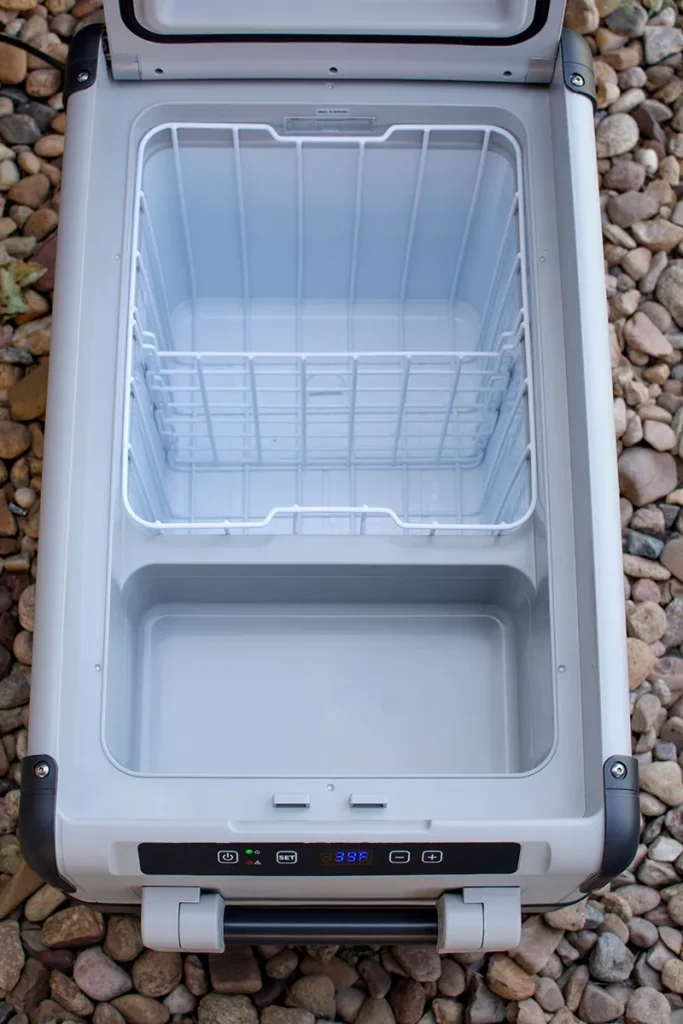
Why It’s Great: With advanced temperature control, remote app monitoring, and whisper-quiet operation, the CFX40 is a tech-savvy overland companion.
Engel MT-45

The Engel MT-45 is one of the most trusted names in portable fridges. Known for its longevity and reliability, this 40L unit uses a unique swing compressor that’s famous for low power draw and quiet operation.
Key Features:
-
40L storage capacity
-
Operates as a fridge or freezer
-
Rugged steel cabinet and handles
-
Ultra-low power consumption (~0.5–1.0 amps/hour)
-
Reliable in hot climates
Likes:
-Functional. Well-built
-Rigid exterior
-Cooling efficiency in extreme ambient settings
-Carrying handles double as secure tie-downs
-Vibration resistant
Dislikes:
-Drink cutouts on exterior of lid aren’t particularly functional
-Temperature turn knob requires initial trial and error to determine desired temperature setting
-Transit/Insulation bag sold separately
Price: $670
www.engelcoolers.com

Why It’s Great: Engel’s proven performance in harsh conditions and its reputation for lasting 15+ years make it a dependable investment.
SnoMaster CLASSIC SERIES CL56D
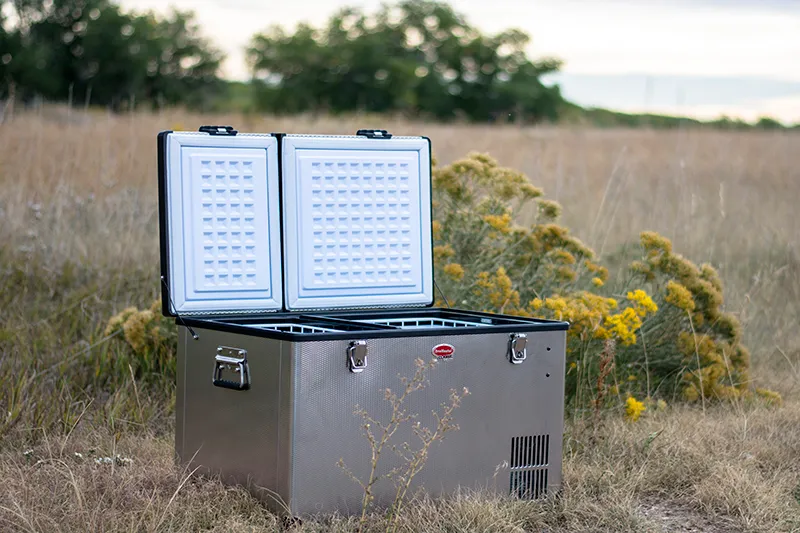
The SnoMaster CL56D is a dual-zone powerhouse designed for those who want maximum flexibility. With independent fridge and freezer compartments, it’s perfect for extended off-grid adventures.
Key Features:
-
56L total capacity with dual compartments
-
Digital thermostat with separate zone control
-
Includes remote control and protective insulated cover
-
Built-in battery protection system
-
Strong stainless-steel build
Likes:
-Dual-zone, dual door
-Look/design
-Insulation bag included
-Solar powered remote controller
-Most features of any fridge tested
-Low voltage cutoff
-Display and control panel with voltage reading
Dislikes:
-Takes a little longer to reach freezing temperature
-Larger compressor will naturally consume more power
Price: $1,149
www.snomaster.com

Why It’s Great: Dual-zone performance, rugged construction, and premium features make the CL56D a solid choice for demanding overlanders.
FAQs
What Is the Best Type of Fridge for Camping?
The best type of fridge for camping depends on your power setup, trip duration, and climate. Compressor fridges are widely regarded as the best option because they actively cool regardless of ambient temperature, are highly efficient, and can function as both fridge and freezer. For casual campers or weekend getaways, a thermoelectric cooler may suffice. For static base camps with gas access, a three-way absorption fridge can be a flexible solution.
Can I Use a Normal Fridge for Camping?
No, standard home refrigerators are not ideal for camping or overlanding. They are not designed for 12V power systems, lack durability for rugged travel, and draw more power than portable units. Overlanding fridges are built specifically for mobile use—offering vibration resistance, efficient cooling on DC power, and compact designs for limited space.
What Is the Best Size Fridge for Overlanding?
| Trip Duration | Number of Travelers | Recommended Fridge Size |
|---|---|---|
| Short Trips (2-3 days) | Solo Traveler | 20-30 Qt |
| Medium Trips (1 week) | Small Group (2-4) | 40-60 Qt |
| Extended Trips (2+ weeks) | Large Group (5+) | 60+ Qt |
Read More: Choosing the Right Rooftop Tent for Your Overlanding Adventures

